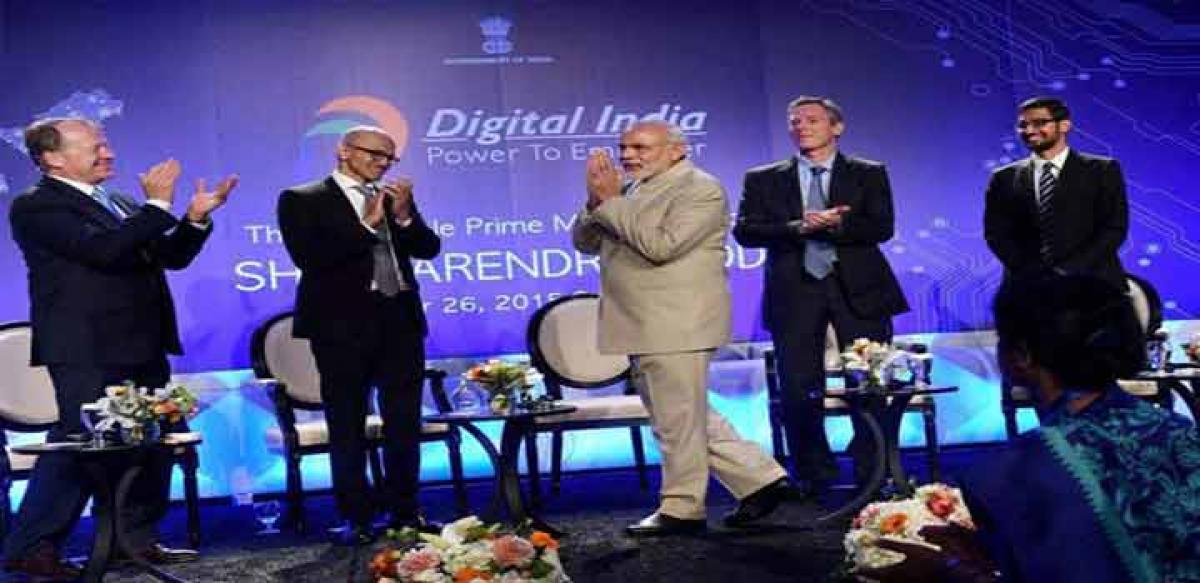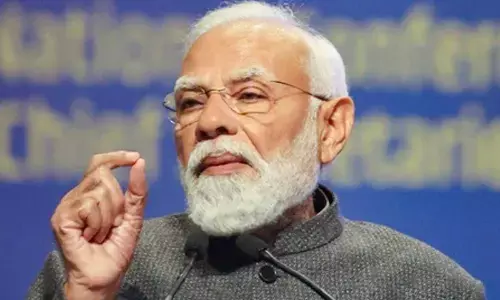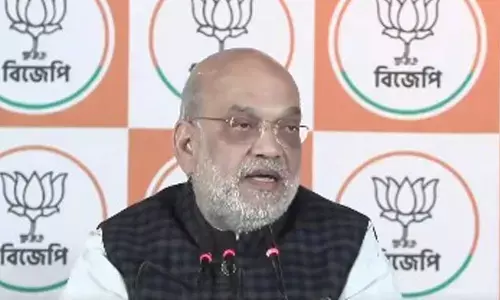Innovating India

Prime Minister Narendra Modi meets global technology giants appealing to them to \"Make in India\". Surely, it\'s appreciable. But, the worrying question in the mind of an aspiring Indian is why can\'t we create an Indian Google or Microsoft or an Apple.
.jpg)
Prime Minister Narendra Modi meets global technology giants appealing to them to "Make in India". Surely, it's appreciable. But, the worrying question in the mind of an aspiring Indian is why can't we create an Indian Google or Microsoft or an Apple.
The economies are no longer built upon physical and natural resources. Economies in the knowledge based 21st century are increasingly built upon knowledge embodied in Science and Technology.
The science, technology and innovation system in India needs complete overhaul and a major impetus. India's present share in global publications is a meagre 3.5 percent. In fact, it's share in high-end research publications is dismal.
The Gross Expenditure on Research and Development (GERD) in India has stagnated around 1 percent of its GDP. The private sector participation is comparatively low.
The current ratio of private to public sector investment in R&D is 1:3. The private sector, which significantly benefitted from liberalisation, seems to be more interested in importing technologies at a lower cost rather than developing indigenous technology.
The governance of scientific eco-system and the policy instruments need to be substantially changed to increase the ratio of the private sector to half of the total expenditure. China spends at least five times more money in R&D compared to India.
More than half of the India's meagre financial resources allocated to science and technology goes to strategic sectors like defence.Amartya Sen in his book 'India: Development and Participation', expresses concern over the social costs of militarisation of science and technology.
The United Nations Development Programme (UNDP) said that India should not just invest in the security of the nation but spend more on security of its people. Science, technology and innovations do not operate in a social vacuum.
There should be a focus on inclusive innovations to achieve inclusive growth. India needs innovative solutions and frugal engineering to solve the problems like to access to quality education, healthcare, drinking water rather than being obsessed with low-cost cars.
India has a dismal record of global patents. The universities have to perform triple functions - teaching, research and extension. But, estimates suggest that hardly 15 percent of Indian universities are research universities.
More and more young men and women are allured away from a career in science, thanks to Information Technology boom. The average Indian class room imparts information to students rather than giving them the pleasure of the challenge to discover.
The venture capital is still underdeveloped despite India trying to stand up on start ups. Our universities are largely delinked from the industry. On the other hand, the S&T park at Tsinghua University, Beijing, houses nearly 5,000 firms.
Hsinchu Science Park at Taiwan's National TSing Hua University and National Chiao Tung University has 450 firms. Similarly, Biopolis and Fusionopolis at National University of Singapore have 200 firms. Indian higher education system therefore has a long way to go.
India with its demographic dividend can be a power house of science if it invests in it.














